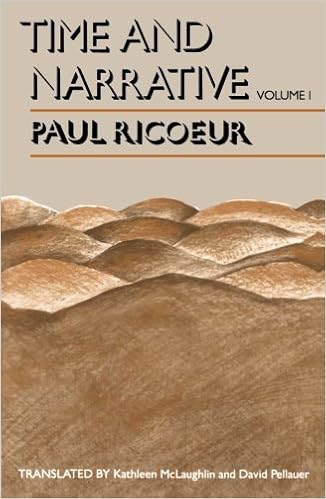
"... a true philosophical page-turner, a publication that's tricky to place down, even given the complexity of its issues." ―Jeffrey Powell
"This is a superb addition to present books on Heidegger’s thought.... the writer has either a command of Heidegger and of the way most sensible to explain him to a latest audience." ―David Wood
In considering with Heidegger, Miguel de Beistegui appears into the essence of Heidegger’s concept and engages the philosopher’s transformative considering with modern Western tradition. instead of isolate and discover a unmarried subject or point of Heidegger, de Beistegui chooses a number of issues of access that spread from an identical query or notion. De Beistegui examines Heidegger’s translations of Greek philosophy and his interpretations and displacements of anthropology, ethics and politics, technological know-how, and aesthetics. considering with Heidegger proposes clean solutions to a couple of philosophy’s so much primary questions and extends Heideggerian discourse into philosophical areas no longer handled by way of Heidegger himself.
Read or Download Thinking with Heidegger: Displacements (Studies in Continental Thought) PDF
Similar Phenomenology books
Time and Narrative, Volume 1 (Time & Narrative)
Time and Narrative builds on Paul Ricoeur's previous research, within the Rule of Metaphor, of semantic innovation on the point of the sentence. Ricoeur the following examines the construction of that means on the textual point, with narrative instead of metaphor because the ruling quandary. Ricoeur unearths a "healthy circle" among time and narrative: time is humanized to the level that it portrays temporal event.
Phenomenology, including Marxism, pragmatism, and analytic philosophy, ruled philosophy within the 20th century—and Edmund Husserl is mostly notion to were the 1st to enhance the idea that. His perspectives stimulated a number of vital later thinkers, akin to Heidegger and Merleau-Ponty, who ultimately grew to become phenomenology clear of questions of data.
The philosophical paintings of Jean-Luc Marion has opened new methods of conversing approximately non secular convictions and reviews. during this exploration of Marion’s philosophy and theology, Christina M. Gschwandtner provides a complete and significant research of the guidelines of saturated phenomena and the phenomenology of givenness.
Additional info for Thinking with Heidegger: Displacements (Studies in Continental Thought)
26 but the essence of language is not anything except the language of essence, that's, the power to reveal the very occasion of disclosedness itself, fact. In hence experiencing and bringing ahead the essence of language, poetry and notion open themselves to the openness of worldwide in its strife with earth, and stay between issues as though for the ¤rst time. There, each notice turns into an occasion, or an offspring born of the development of being. Language itself turns into the epiphany of being. Now, this adventure of language, this Erfahrung of its essence, has not anything to do with both a lived adventure (Erlebnis) of it, that's, a subjective adventure or come across, or an experimentation on language, with the advance of an experimental language. The “concepts” of the philosopher, the “images” of the poet aren't pushed by way of a hope for innovation and a necessity to scan. particularly, pondering and poetizing ensue merely the place and whilst language is left to talk the appearance of being, in simple terms whilst asserting turns into a listening and a Sichsagenlassen. In poetry and in proposal it's the note itself that's made to talk, for the observe alone—which is neither an idea, nor a philosopheme, neither a picture nor a metaphor—speaks the article: The be aware ¤rst shall we a specific thing [ein Ding] be as factor. The observe makes the article right into a thing—it determines [bedingt: actually, “bethings”] the article. 27 there's, hence, a relation of absolute proximity among poetry and thought—a proximity to the resource whence language arises. simply because this relation relies on a shared proximity to the resource, it additionally consists of a undeniable distance. Such is the explanation why it's a relation of local. The Nachbar, Heidegger reminds us in “Building living Thinking,” is the Nachgebur, the Nachgebauer, that's, she or he who dwells (from the previous German buan) within sight (nach comes from nah, close to, close). but acquaintances don't turn into such easily due to a strategy wherein they draw just about one another, hence developing a nearness, an area. fairly, as Heidegger places it, “the nearness that pulls them close to is itself the development [die Nähe, die nähert, is selbst das Ereignis] through which poetry and considering are directed into the right kind [das Eigene] in their essence. ”28 certainly, this occasion is not only any occasion, however the occasion or the unfolding of being itself, and its introduction to language, during which guy ¤rst penetrates the field of what's such a lot right to him, that's, the sector of his essence. The Greeks, Heidegger tells us, these Greek thinkers and poets sooner than the beginning of metaphysics within the Pla- Aesthetics 138 tonic and Aristotelian texts, possessed a unmarried be aware to call the reciprocal belonging and the coming-together of the development of being and the development of language, of being and announcing, a notice which, in addition, additionally served to designate being and announcing separately, as though each one constantly and already integrated the opposite. This early and unmarried be aware, which Heidegger interprets as Ereignis, used to be l’goj. the following we're, then, again to l’goj—even notwithstanding, after all, the experience of l’goj right here at paintings is similar to to enact the step again from its Aristotelian, and canonical, interpretation, again into its essence, because the note designating the originary connection among being and announcing.



